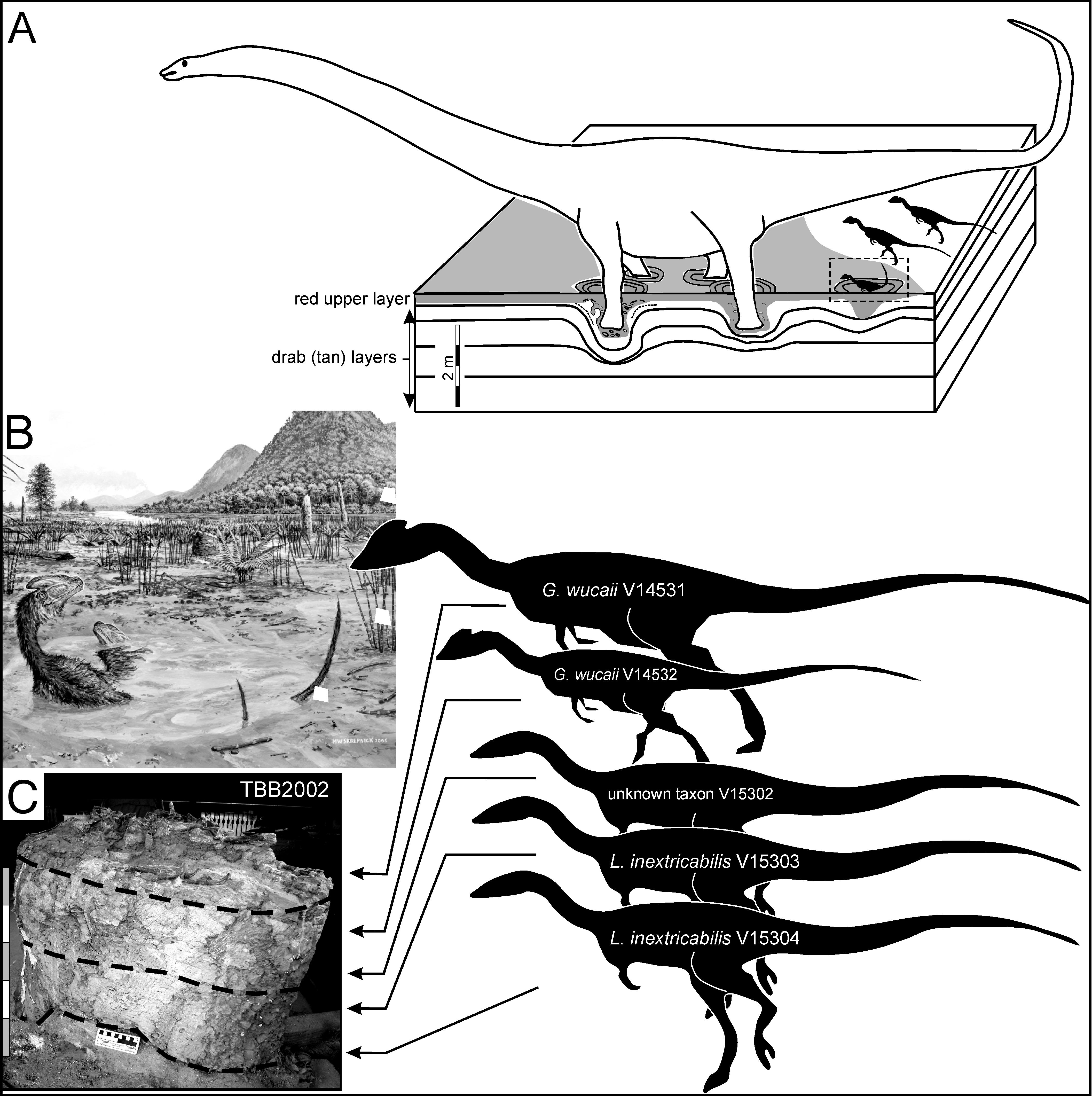
First-Ever Club-Tailed Dinosaur Footprints Unearthed in British Columbia Rewrite Dinosaur Evolution Narrative
In a significant discovery that upends long-standing beliefs about dinosaur migration and extinction across North America, researchers have found the inaugural known footprints of club-tailed armored dinosaurs in the rugged landscapes of British Columbia. Discovered near Tumbler Ridge in northeastern B.C. and stretching into northwestern Alberta, these ancient three-toed trackways, dated at 100 million years old, offer the first tangible proof that tail-clubbed ankylosaurid dinosaurs — long thought to have disappeared from the area during the mid-Cretaceous — once inhabited western Canada.
Ruopodosaurus clava: A New Era in Dinosaur Paleontology
The recently discovered tracks have been linked to a previously unknown species designated as Ruopodosaurus clava — which translates to “the tumbled-down lizard with a club/mace.” This designation honors both the challenging terrain of the region, where many tracks were located on dislodged rock fragments, and the dinosaur’s likely weaponized tail. These prints are categorized within the ankylosaurid family — stout, heavily armored relatives of the more commonly encountered nodosaurid ankylosaurs — and signify the first known evidence of ankylosaurids in this part of North America from the mid-Cretaceous era.
Notably, these fossil impressions stand apart from the current record. While the majority of recognized ankylosaur footprints in North America are attributed to Tetrapodosaurus borealis and exhibit four toes, the Ruopodosaurus tracks showcase only three. This three-toed structure is a hallmark of ankylosaurids, distinguishing them from their nodosaurid relatives that have more adaptable tails.
Bridging a 16-Million-Year Fossil Void
Previously, no skeletal remains of ankylosaurids had ever been documented in North America from the time frame of 100 to 84 million years ago. Paleontologists had hypothesized that the lack of fossils during this period indicated a local extinction event or migration out of the continent. The identification of Ruopodosaurus clava overturns that hypothesis. These footprints now provide irrefutable evidence that ankylosaurids flourished in mid-Cretaceous Canada, coexisting with their nodosaurid counterparts and inhabiting the same northern ecosystems for millions of years.
“This discovery addresses a crucial gap in the fossil record and fundamentally alters our understanding of dinosaur distribution,” states Dr. Victoria Arbour, the study’s lead author and curator of paleontology at the Royal BC Museum. “It further underscores the significance of the Peace Region in northeast B.C. in reconstructing prehistoric life in North America.”
Global Collaboration and Innovative Techniques
This breakthrough is the culmination of over a decade of meticulous observation and teamwork among scientists from the Royal BC Museum, the Tumbler Ridge Museum, Tumbler Ridge UNESCO Global Geopark, and the University of Colorado. Dr. Charles Helm, the scientific advisor for the Tumbler Ridge Museum, first noticed the distinctive three-toed trackways at various remote locations and consulted with Dr. Arbour, whose specialization in armored dinosaurs assisted in revealing their identity.
Photogrammetry was instrumental in the investigation. This method enabled researchers to produce detailed 3D images of the footprints utilizing high-resolution photographs taken in the field. Some of the most well-preserved prints were found in limestone blocks that had naturally fallen from shale cliffs — hence the species’ name — while others remain embedded in isolated stream beds and along riverbanks, undisturbed for millions of years.
Estimates based on the footprints’ size and spacing imply that the creatures measured approximately 5 to 6 meters in length (akin to the size of a small bus), stood 1.2 meters tall at the hip, and likely resembled Chinese ankylosaurids like Gobisaurus or Jinyunpelta. These dinosaurs were herbivorous, slow-moving, and heavily armored — featuring bony plates and formidable tail clubs for defense.
Insights into Social Behavior
One of the more fascinating aspects of the site is that multiple parallel trackways do not intersect or cross, suggesting that several Ruopodosaurus may have traveled in small groups — providing a rare insight into the social behavior of these defensive giants.
“Since two young boys uncovered an ankylosaur trackway here in 2000, Tumbler Ridge has become synonymous with the narrative of armored dinosaurs,” notes Dr. Helm. “Thanks to this study, we now understand that two kinds of ankylosaurs coexisted, and that this location is the only known site in North America where Ruopodosaurus has been identified.”
A Victory for Trace Fossils
While skeletal fossils often receive the majority of attention in dinosaur paleontology, trace fossils — including footprints, burrows, and feeding marks — present a distinctive perspective into behavior, movement, and ancient ecosystems. Especially
